Build Site Volunteer Handbook
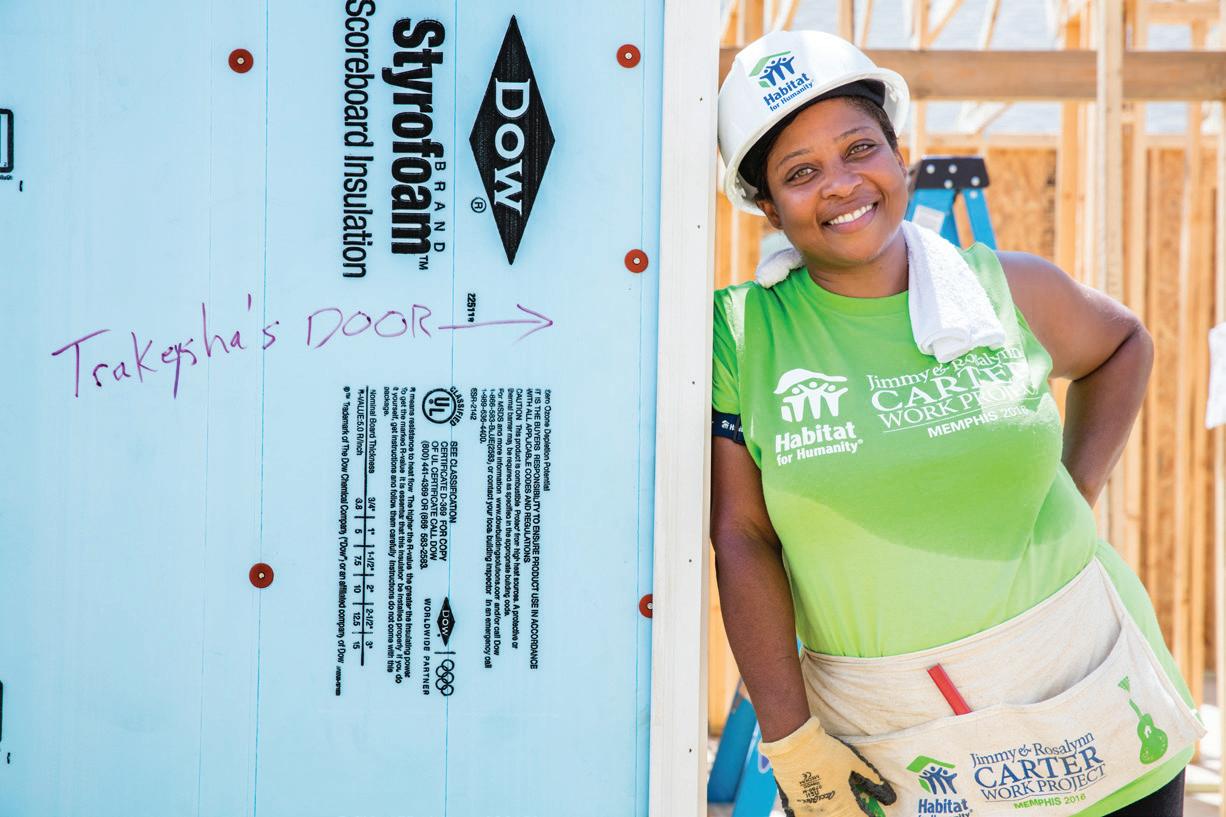
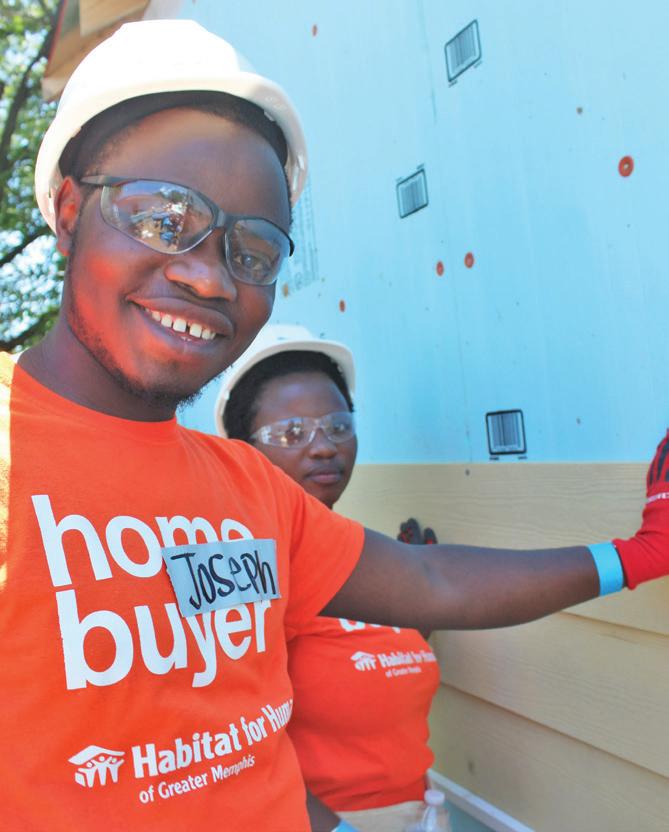
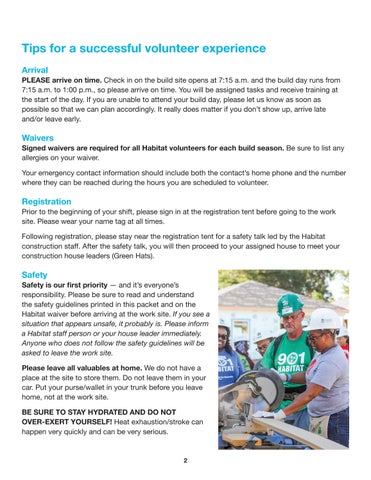


PLEASE arrive on time. Check in on the build site opens at 7:15 a.m. and the build day runs from 7:15 a.m. to 1:00 p.m., so please arrive on time. You will be assigned tasks and receive training at the start of the day. If you are unable to attend your build day, please let us know as soon as possible so that we can plan accordingly. It really does matter if you don’t show up, arrive late and/or leave early.
Signed waivers are required for all Habitat volunteers for each build season. Be sure to list any allergies on your waiver.
Your emergency contact information should include both the contact’s home phone and the number where they can be reached during the hours you are scheduled to volunteer.
Prior to the beginning of your shift, please sign in at the registration tent before going to the work site. Please wear your name tag at all times.
Following registration, please stay near the registration tent for a safety talk led by the Habitat construction staff. After the safety talk, you will then proceed to your assigned house to meet your construction house leaders (Green Hats).

Safety is our first priority — and it’s everyone’s responsibility. Please be sure to read and understand the safety guidelines printed in this packet and on the Habitat waiver before arriving at the work site. If you see a situation that appears unsafe, it probably is. Please inform a Habitat staff person or your house leader immediately. Anyone who does not follow the safety guidelines will be asked to leave the work site.
Please leave all valuables at home. We do not have a place at the site to store them. Do not leave them in your car. Put your purse/wallet in your trunk before you leave home, not at the work site.
BE SURE TO STAY HYDRATED AND DO NOT OVER-EXERT YOURSELF! Heat exhaustion/stroke can happen very quickly and can be very serious.
No youth under the age of 16 will be allowed on the construction site. No exceptions.
Youth between the ages of 16 and 17 must provide a waiver signed by a parent or guardian. Youth between the ages of 16 and 17 may not participate in the following activities: use of power tools or saws, wrecking/demolitions, excavation operations or roofing.

Youth between the ages of 16 and 17 may participate in the following activities: errand/cleanup/recycling work, office/clerical work, landscaping that does not involve the use of power tools, or painting.
An adult must accompany groups of 5 or more youth ages 16 and 17.
Breathable, comfortable clothing that you don’t mind getting dirty. Closed-toe shoes are required on the build site. Please dress in layers, depending on the weather.
The main first aid station is located in the registration tent. A volunteer or staff person who is first aid and CPR certified will be on site at all times.
We strongly recommend that you bring your own gloves. We will provide gloves, but we cannot promise that we will have your correct size. Other items we strongly recommend you bring for personal use include sunglasses and rain gear. Do not bring your own power tools!
Habitat will provide bottled water, sports drinks and snacks. Boxed lunches will be passed out at the end of the day.
Does the weather look bad or might something else cancel your scheduled build day? We post build day cancellations in the alert box on our website’s homepage, memphishabitat.com
Please return Habitat’s tools to the toolbox assigned to your group upon completion of your shift.


Safety is a vital part of our work and we are committed to creating the safest work environment possible for everyone on the build site. If you see anything that looks unsafe, report it to a Green Hat or staff member. Below are some tips to help you and others stay safe while you are on our build site. If you have any questions about these safety tips, feel free to ask a Green Hat or staff member for clarification.
Each build day begins with a safety talk. We’ll review the day’s task, the safety equipment you will use and where it’s located, point out the locations of first aid kits, and review any other information you need to know to keep yourself and your fellow volunteers safe on the build site.
• Hard hats and safety glasses should be worn at all times while on the construction site.
• Protective eyewear should be worn during the operation of power saws or other equipment that may throw off particles.
• No baseball caps or other items that will impair the proper fitting of the hard hat should be worn underneath hard hats.
• Gloves should be worn while handling wood or metal products.
• Protective earplugs should be worn during prolonged operation of power tools.
• Dust masks should be worn when sanding.
• Wear shoes that are in good condition, are closed-toe, have good traction, and that you do not mind getting dirty. Steel or composite toe boots are preferable.
• Sandals, flip flops, and bare feet are prohibited. Soft-soled shoes should be worn only where appropriate.
Fall protection
• Guard rails or personal fall arrest systems must be used when working 6 feet or more above lower levels.
• Don’t work at any height above 6 feet without using an approved form of fall protection for the job.
Site housekeeping
• Keep supplies stacked neatly, and keep walkways clear of debris and trash. Conduct continual housekeeping sweeps both inside and outside the structure. Cover and mark all holes.
• Don’t leave nails or other debris on the ground. These create a variety of hazards, including tripping and impalement.
• Inspect ladders prior to use to make sure they are secure, are the right size for the job and are on solid footing.
• Stepladders must be fully opened and on level ground with the spreaders locked.
• Keep your belly button between the side rails and stay below the top two rungs.
• Do not use a stepladder that is folded up and leaned against a wall.
• An extension ladder’s angle should be at a 4-to-1 ratio (that is for every 4 feet in height, the ladder should be 1 foot away from the surface it is leaning against). The top should be tied off and extend 3 feet above the roofline.
• Use according to manufacturer’s instructions, and heed electrical wires overhead.
• Do not use an extension ladder at an incorrect angle.
• Do not level ladder feet by shimming something underneath them.
• Do not operate power tools without proper instruction from your site supervisor.
• Use the appropriate personal protective equipment with each tool (safety glasses, hearing protection and masks) as instructed by our staff and/or Green Hats.
• Don’t wear loose-fitting clothing, jewelry hanging from around your neck or loose-fitting gloves while operating power tools.
• Make sure blade guards are in place when operating power saws.
• Avoid stepping on electrical power cords, especially in wet locations.
• Make sure the ground fault circuit interrupter is in place before plugging in electrical power cords.
• Do not use broken or malfunctioning tools.
• If you, or someone else, is cut or injured, report immediately for first aid.
Currently, Memphis Habitat does not require volunteers to wear masks on our build site unless it is a necessary safety precaution for a specific build task, but we do encourage volunteers to mask accordingly to their comfort level. We also encourage volunteers to be mindful of their health and not come to the build site if they are feeling under the weather or otherwise not well. We continue to monitor local, state and federal regulations and recommendations in regard to COVID-19. Please DO NOT volunteer if you have symptoms or have been exposed to someone with COVID-19.
Thank you for volunteering with Memphis Habitat! We could not help local families build strength, stability, self-reliance and housing without supporters like YOU.
We hope you have a wonderful time on the build site. If you would like more information about how you can get involved, please contact us at volunteer@memphishabitat.com.
Thank you!








Hard hats and safety glasses should be worn at all times while working on an active construction site.
No baseball caps or items that will impair the proper fitting of the hard hat should be worn underneath hard hats.
Wear shoes that are in good condition, are closed-toed and have good traction. Steelor composite-toe boots are preferable.

Sandals, flip-flops and bare feet are prohibited. Soft-soled shoes should be worn only where appropriate.
Hard hats and safety glasses
Waiver and liability forms, sign-in sheets, emergency plans, first-aid kits, and safety data sheets should be available on site and be accessible to all workers.
A trained Habitat Competent Person should be on site to ensure that inspections and setups are performed correctly and that all work is being done in a safe manner in accordance with Habitat and OSHA build site rules.



An extension ladder’s angle should be at a 4-to-1 ratio (i.e., for every 4 feet in height, the ladder should be 1 foot away from the surface it is leaning against) The top should be tied o and extend 3 feet above the roofline. Use ladders according to manufacturer’s instructions, and heed electrical wires overhead.
Don’t use at an incorrect angle. Don’t level ladder feet by shimming.

Guardrails or personal fall arrest systems must be used when working 6 feet or more above lower levels.
Don’t work at any height above 6 feet without using an approved form of fall protection for the job.

Stepladders must be fully opened and on level ground with spreaders locked. Keep your belly button between the side rails and do not step on the top two rungs.
Don’t use ladders that are folded up and leaned against walls or that are in poor condition.


Use tools and extension cords that have three prongs or that are double insulated and in good condition. Don’t use frayed cords. Keep tools and cords away from water.
Use ground fault circuit interrupters (GFCIs) or an adapter.
















Footwear
Extension ladders
Keep supplies stacked neatly, and keep walkways clear of debris and trash. Conduct continual housekeeping sweeps. Cover and mark all holes.
Don’t leave nails or other debris on the ground. These create a variety of hazards, including tripping and impalement.
Fall protection
Site housekeeping
Use the appropriate personal protective equipment with each tool (safety glasses, hearing protection and masks) Don’t cut cement board siding such that silica dust is created.


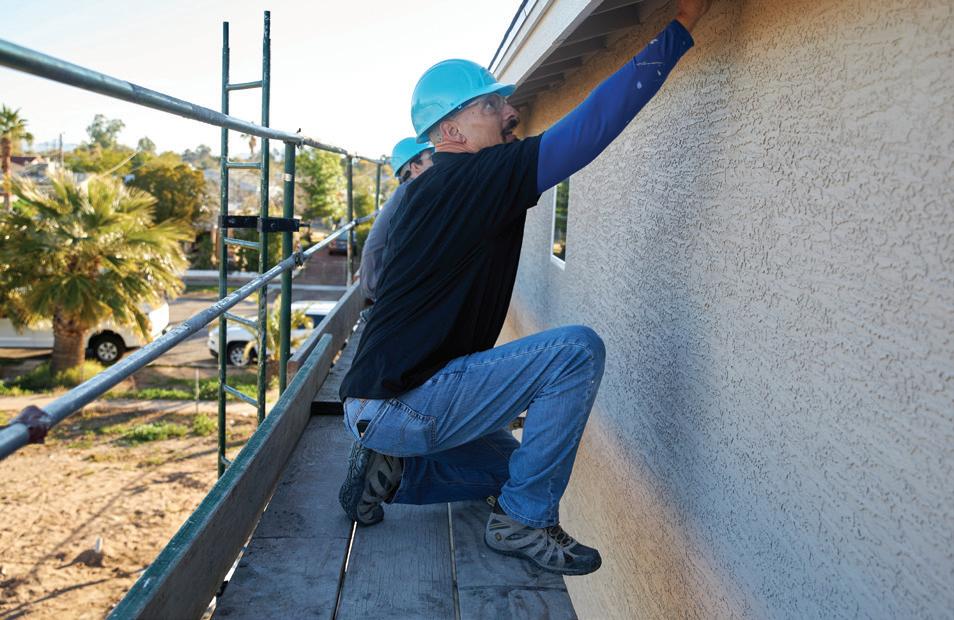
Stepladders
Power tools and personal protective equipment


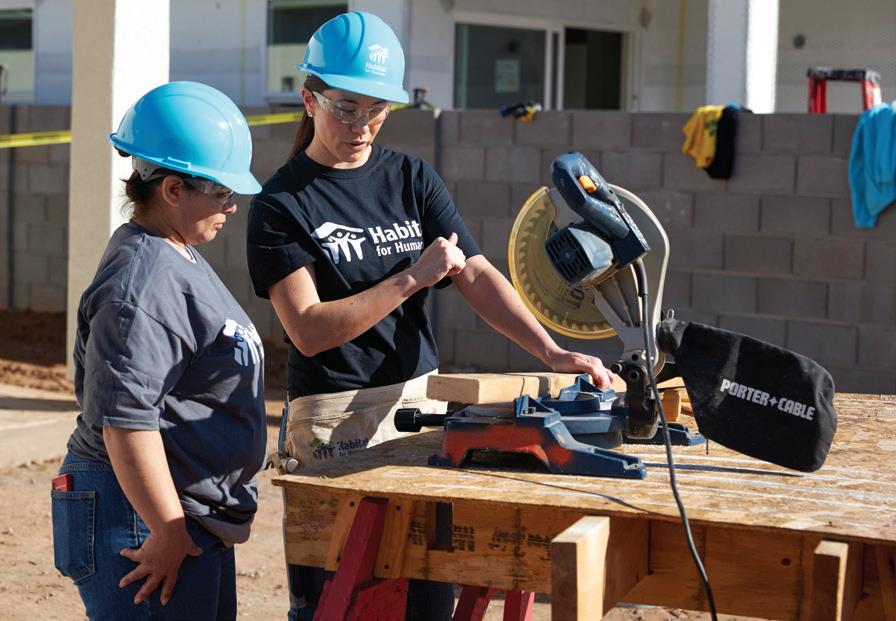
Don’t wear loose-fitting clothing or loose-fitting gloves while operating power tools.


Sca olding should be set up and adjusted by trained individuals and must be plumb, level and square; braced with railings and guards; and installed appropriately.
Don’t use sca olding that has not been inspected by the site’s Habitat Competent Person.








Electrical cords
Scaffolding